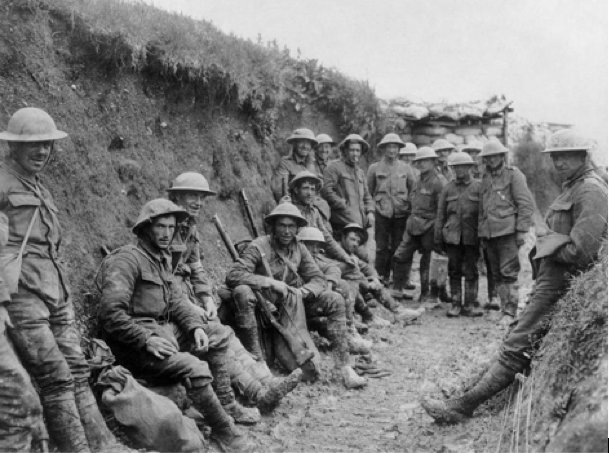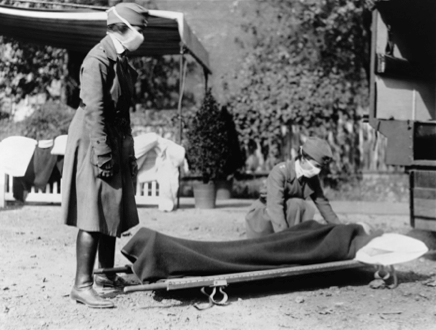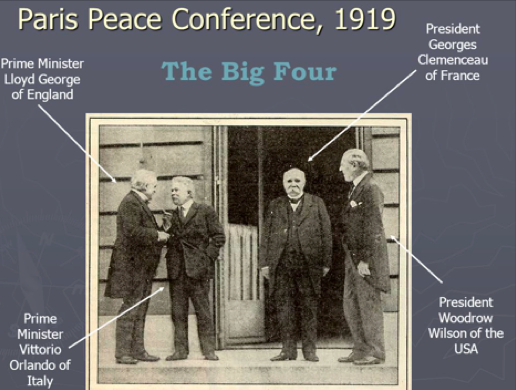60 Deaths
There are names carved on to the oak of the Memorial Rail, in the Chapel at the University of Winchester, 60 of them former students of Winchester Training College (WTC) who died in the years 1914 to 1919. Of those names, 58 are of men who conform to the traditional idea of ‘War Dead’, but there are 2 who, by accepted definitions, should not have been included. Possibly those 2 names were added because, at the time of planning the memorial, the facts surrounding their deaths were not fully known or understood. It could equally have been that although the facts were known, they were still considered to be worthy of a place on the Memorial in their old College. The 60 men served in different parts of the world, and held different ranks in many different Regiments. They did not all die in battle but, however they died, their loss would have been felt keenly by their families and their communities.
Over half of the 60 deaths were on the Western Front. Of those, 27 died in France and 8 in Belgium. They were from Regiments which had their origins all over England.
The 14 deaths shown in pie chart 1 from the Mesopotamia and Anatolia theatre of war were all from the same Battalion of the same Regiment, the 1/4th Hampshires. There was also one man from the Hampshire Regiment who died in the Egypt and Palestine area, but the other three were all from different Regiments. The slice labelled ‘Other’ on the pie chart includes one death in India and 6 in England.
The largest cause of death amongst the 60 was on the battlefield, in the casualty classification of Killed in Action. This term causes occasional confusion as it is often supposed that this must refer to instant death. Killed in Action signifies that a combatant’s death was caused by hostile forces. It also means that the combatant died before he was able to receive medical attention. It was an uncomfortable truth during the Great War that many men died on the battlefield because the medical help that may have saved their lives was unable to reach them in the heat of battle. If a wounded casualty was alive long enough to reach the Regimental Aid Post immediately behind the firing line, he was then deemed to have died of wounds, even if he died before anyone was able to administer basic first aid.
The casualty chain of evacuation began with the aid posts and bearer relay posts close to the front line. This was where the casualty would receive their first medical attention. Although this was of necessity very basic, there would usually be a Medical Officer, orderlies and stretcher bearers on hand. The next step along the evacuation chain would be the Field Ambulance, which was a mobile medical unit. Each Division would usually have three Field Ambulances. The stretcher bearers would ferry the casualties to the Field Ambulances. They also established Dressing Stations which provided further treatment before a casualty would then be moved to a Casualty Clearing Station, either by foot, on a horse-drawn wagon, motor ambulance, lorry, or occasionally by light railway. The Casualty Clearing Station was the first large, well-equipped static medical facility, able to hold 1,000 casualties. Any serious case that was unable to be moved would be treated there. Cases with minor injuries would be patched up and returned to their units. Any other serious cases that could be moved were passed along the chain to the Base Hospital. This journey was usually made by train as the locations of Base Hospitals were generally dictated by the railway links. Once at the Base Hospital the decision was made either to continue treatment there or to evacuate the Casualty back to ‘Blighty’. Soldiers returned to the U.K. would be treated in pre-existing, but expanded, military hospitals. Public hospitals also took casualties and treatment facilities were set up in large houses and public buildings.
Apart from the deaths in Mesopotamia and Anatolia and that of Corporal Robert Ferguson, who died of illness in India, all the other deaths in the Died of Illness classification occurred in the U.K. Two of the 6 in that segment were Harry Payne and William Wrenn. They were the two former students on the Chapel Rail whose inclusion on the memorial is subject to speculation.
Harry Payne had served his country in Egypt and the Western Front before being seriously wounded and losing an eye. He was transferred back to the U.K. and after treatment, was discharged as being medically unfit for service on 5th September 1917. Harry died in 1919, one of the many young men who died from the Spanish Flu pandemic. Although he was out of uniform by the time he died, it is hard to deny him his place on the Chapel Memorial. The other former student who was out of uniform by the time of his death was William Wrenn. He enlisted in 1915 but by December 1916 he was discharged as being no longer physically fit for war service. Unlike Harry Payne, William’s discharge from service was not due to wounds received in a theatre of war, but rather he had developed a degenerative disease and died in March 1917 of Disseminated Sclerosis and Respiratory Failure. He had served his country although he never left these shores, and perhaps would have had as distinguished a military career as any of the others had his life not been cut short by an untreatable condition.
One, Lance-Corporal Charles Erwood, was the first of the 60 to die, in 1914, of pneumonia, also without ever setting foot on foreign soil. Corporal Cecil Dobson was one of the 6 who died in England, from wounds received on the Western Front. The only Royal Navy serviceman among the 60, Able Seaman William Harden, died in British waters, and the final one of this group was Captain Frederick Bishop, who died from influenza in the Spanish influenza pandemic.
Most people have heard about the influenza pandemic that took so many lives towards the end of the war. There are several theories as to why it was so virulent and why it spread so far and so rapidly. It is highly unlikely that the Spanish flu originated in Spain. It probably did begin in Europe, but it was publicised more widely in Spain because they were not at war and therefore were not subject to reporting restrictions. The pandemic is often quoted as being the deadliest in history; whether it is possible to be certain of that is debateable. There were an estimated 500 million infected world-wide, which equated to approximately one third of the world’s population. Of those infected an estimated 20-50 million died.
The 1918 influenza outbreak was first observed in Europe, the United States and parts of Asia, before swiftly travelling to all parts of the globe, including fairly isolated communities in places like Alaska. In the early twentieth century there were no effective drugs or vaccines to treat an influenza infection, a virus that attacks the respiratory system. Influenza outbreaks happen every year and vary in severity. Flu is easily spread and has the ability to rapidly mutate. The first wave of the 1918 flu began in the spring and was generally mild. A second highly contagious wave appeared in the autumn of 1918. Victims often died quickly after first showing symptoms, their lungs filling with fluid, causing suffocation.
One of the unusual characteristics of the 1918 pandemic was that it struck down many previously healthy young people, a group who you would normally expect to have more resistance to this type of infection. In the United States, in the first year of the pandemic, so many young people died that the life expectancy figure dropped by 12 years. More American soldiers died from the flu than were killed in battle, with 36% of the Army and 40% of the Navy infected. Still in the U.S., 99% of the deaths were in the under 65 age group, with nearly half of those being aged between 20 and 40. By the summer of 1919 the pandemic was coming to an end.
Research has been done in recent years to try to discover why this particular strain of influenza was so aggressive. In 2008 a group of researchers discovered 3 genes which enabled the virus to weaken a victim’s bronchial tubes and lungs enabling bacterial pneumonia to take hold. Other researchers, having recovered samples of the virus from the frozen bodies of victims, discovered that the infection caused a rapid progressive respiratory failure and death through a cytokine storm (an overreaction of the body’s immune system). That led to the postulation that the stronger immune reactions of young, healthy people would result in a more severe reaction to infection, whereas the old and very young with weaker immune systems would have a weaker reaction. There is no one accepted explanation for why the 1918 flu outbreak was so deadly. Another group of researchers, looking at the original medical reports from the period of the pandemic, found that the viral infection itself was no more aggressive than any other flu outbreak, but rather that there were special circumstances (malnourishment, overcrowded medical camps and hospitals and poor hygiene) which promoted bacterial superinfection that killed most of the victims typically no faster than would be expected. The movement of troops back to home bases around the world after the Armistice, would have exacerbated the rapid spread of the infection.
Frederick Bishop and Harry Payne both died of influenza, in early 1919, in different London hospitals, and Robert Ferguson died in India in January 1919 also from influenza.
There was one more death in the U.K., our only former student who was serving in the Royal Navy, Able Seaman William Harden. He died when his ship, HMS Glatton, caught fire after an explosion in the mid-ships magazine while in Dover harbour. A ship loaded with explosives was moored alongside, and it was assessed that Glatton could not be safely moved or scuttled and the other vessel could not be safely manoeuvred clear. To prevent the fire spreading to the other ship, risking a catastrophic explosion that might destroy the town, the difficult decision was taken to torpedo HMS Glatton to sink her. As it will never be established if he died in the initial fire, from the torpedo attack or from drowning, his death is classified as ‘Killed by means other than disease, accident or enemy action’.
It is possible that some of the 60 were originally classified as ‘Missing’. That would be the case if it was not possible to be sure that someone was dead. Official enquiries would have been made, through neutral channels, to see if the soldier was in enemy hands as a prisoner, or if the enemy had definite knowledge that he was dead. After six months had elapsed with no news, the next of kin would be contacted again to ask if they had received any information from friends or comrades. If there was still no indication that he was alive, a presumption of death was then made, for the date he was last known to be alive.
Dramatised wartime stories often show the anxious families being presented with a telegram informing them of a loved one’s death. In fact it was only the families of Officers who were sent telegrams. The families of Other Ranks were informed by means of Army Form B104-82.
In November 2018 we commemorated one hundred years since the Armistice. People often confuse this with the end of the war. The Armistice simply marked the cessation of hostilities. The war did not officially end until the Treaty of Versailles was signed on 28th June 1919. Any serviceman, still in uniform, who died in the period between the Armistice and the signing of the treaty, was counted amongst the War Dead.
Researcher and Author: Dee Sayers
Sources
Epitaphs of the Great War (2018). Killed in Action: Died of Wounds. [online] Available at: www.epitaphsofthegreatwar.com/killed-in-action [Accessed 2018].
Flikr (2017). Wounded WW1 soldiers at the Convent of the Little Sisters, Norwich, England. [onlien] Available at: https://www.flickr.com/photos/70994841@N07/34420671611 [Accessed 2018].
The Irish Times (2016) One for all, all for one: first World War Allies agree military strategy: image [online] Available at: https://www.irishtimes.com/culture/heritage/one-for-all-all-for-one-first-world-war-allies-agree-military-strategy-1.2640994 [Accessed 2018].
The Long Long Trail, (2018). Welcome to the long long trail. [online] Available at: http://www.longlongtrail.co.uk/ [Accessed 2018].
Slide Player (2018) Paris Peace Conference 1919, Slide 9. [online] Available at: http://slideplayer.com/slide/9370046/ [Accessed 2018].
Wikimedia (2009). File:1918 flu outbreak2.jpg – Demonstration at the Red Cross Emergency Ambulance Station in Washington, D.C., during the influenza pandemic of 1918. [online] Available at: https://commons.wikimedia.org/wiki/File:1918_flu_outbreak2.jpg [Accessed 2018].
Wikipedia (2018). Killed in action. [online] Available at: https://en.m.wikipedia.org/wiki/Killed_in_action [Accessed 2018].
Wikipedia (2018). Spanish Flu. [online] Available at: https://en.wikipedia.org/wiki/1918_flu_pandemic [Accessed 2018].








